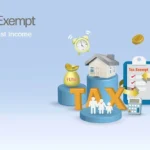Introduction: The Rising Need for Smart Cross-Border Financial Planning Canada US
Families with professional careers, business interests, or investment portfolios that span both Canada and the United States face a unique set of financial complexities. These high-income families must balance not only lifestyle choices and retirement aspirations, but also cross-border tax planning, investment management, and household budgeting.
The reality is clear: what works in one country may not apply seamlessly across the border. For example, a Canadian RRSP might provide long-term benefits under Canadian law but requires nuanced RRSP US tax planning when you live, earn, or retire in the United States. Similarly, a U.S. 401(k) or IRA needs careful integration into Canadian tax strategies when moving north. Without proper cross-border financial planning Canada US, costly mistakes are inevitable.
This blog explores practical strategies to align income, assets, and retirement accounts into a cohesive, tax-smart plan. The goal is straightforward: helping high-income families achieve long-term prosperity by minimizing tax drag and optimizing wealth growth.

Content
Section 1: Aligning Retirement Accounts Across Borders
The Challenge of RRSP US Tax Planning
One of the most common financial puzzles involves retirement savings vehicles. Canadians moving south of the border often ask how their Registered Retirement Savings Plans (RRSPs) will be taxed. Conversely, Americans relocating to Canada must understand how their IRAs and 401(k)s fit into Canadian law.
RRSP US tax planning requires more than just filing compliance—it demands strategy. Under the Canada-U.S. Tax Treaty, RRSPs can generally grow tax-deferred, even when the account holder becomes a U.S. tax resident. However, withdrawals may be subject to dual taxation unless coordinated with a qualified Canada US financial advisor.
For high-income families, the risk is clear: uncoordinated withdrawals from RRSPs, IRAs, or 401(k)s can lead to unnecessary tax leakage. A well-designed cross-border withdrawal strategy should factor in:
- U.S. vs. Canadian marginal tax brackets
- Treaty-based tax credits
- Timing of withdrawals relative to residency status
- Conversions (e.g., RRSP to RRIF, IRA to Roth)
Integrating Canadian RRSPs with U.S. Accounts
A family that has accumulated both Canadian RRSPs and U.S. IRAs can optimize their plan by aligning withdrawal schedules. For instance, early Roth conversions in the U.S. may create long-term tax savings, while carefully timing RRSP withdrawals could reduce exposure to higher brackets later in life.
A cross-border strategy should answer questions such as:
- Should you withdraw from Canadian accounts first or U.S. accounts?
- Is it smarter to delay RRSP withdrawals until after returning to Canada?
- How can you leverage the foreign tax credit system to avoid double taxation?
Without careful RRSP US tax planning, families risk paying up to 10–15% more in lifetime taxes—a substantial erosion of intergenerational wealth.
Section 2: Cross-Border Household Budgeting Strategies
Managing Income and Expenses Across Two Tax Systems
Household budgeting is complex when your family lives, works, or invests across borders. Exchange rates, different cost-of-living standards, and taxation rules can disrupt even the most carefully crafted budgets.
High-income families often have:
- Income sources in both currencies (CAD and USD)
- Real estate holdings in both countries
- Children enrolled in schools or universities across borders
- Retirement goals that may involve relocating internationally
A cross-border household budgeting strategy ensures cash flow remains sustainable while optimizing after-tax income.
Key Elements of a Cross-Border Budget
- Currency Exchange Planning
Families must manage not only spending patterns but also the volatility of CAD/USD exchange rates. A sudden 10% swing could impact tuition payments, mortgage obligations, or investment returns. - Dual Tax Filing Considerations
Many families face dual filing requirements—IRS forms like FBAR and Canadian T1135 reporting. Budgeting for compliance costs, penalties, and professional fees is essential. - Cash Flow Mapping
Aligning salary, rental income, dividends, and capital gains across jurisdictions allows for a more predictable budget. - Debt Management
Mortgage interest deductibility differs between Canada and the U.S., requiring careful structuring of cross-border borrowing strategies.
Case Study: A Dual-Country Family
Consider a Toronto-based executive seconded to a New York office for five years. Her family maintains a home in Canada but rents in Manhattan. Household budgeting requires careful tracking of Canadian mortgage payments, U.S. rent, and the impact of fluctuating exchange rates. By applying a cross-border household budgeting strategy, she ensures her income covers obligations in both countries while maintaining contributions to both RRSPs and 401(k)s.
Section 3: Cross-Border Investment Management
Why Standard Investment Approaches Fail Across Borders
Many high-income families assume that if their investment portfolio works in one country, it will work in another. Unfortunately, this assumption can be costly.
Canadian-domiciled mutual funds and ETFs are considered Passive Foreign Investment Companies (PFICs) under U.S. tax law. PFICs carry punitive taxation and reporting requirements, making them highly unsuitable for U.S. residents. Similarly, U.S.-domiciled ETFs may not enjoy Canadian tax efficiency.
This is why cross-border investment management is not just about asset allocation—it’s about selecting investment vehicles that comply with both tax systems.
Building a Tax-Efficient Cross-Border Portfolio
- Avoid PFICs for U.S. Residents
Families living in the U.S. should avoid holding Canadian mutual funds in taxable accounts. Instead, they may prefer U.S.-domiciled ETFs or direct equities. - Leverage Treaty-Based Opportunities
The Canada-U.S. Tax Treaty provides relief mechanisms for certain investment types, but portfolio construction must account for them. - Optimize Account Location
Tax-efficient investing involves placing certain asset classes in the right jurisdiction. For example, U.S. municipal bonds offer advantages for U.S. taxpayers but none for Canadians. - Estate Planning Considerations
U.S. estate tax exposure is a serious risk for Canadian residents holding U.S. securities. Proper titling and trust planning are essential.
Role of Diversification Across Currencies
High-income families with cross-border exposure must also manage currency diversification. Holding assets in both CAD and USD may provide a natural hedge against exchange rate volatility. However, diversification must be balanced with tax efficiency.
For example, a Canadian family with U.S.-based rental property must decide whether to hedge rental income flows into Canadian dollars or keep them in USD for reinvestment. This decision is part of strategic cross-border investment management.
Section 4: Role of a Canada US Financial Advisor
Why DIY Approaches Can Be Dangerous
For high-income families, cross-border planning is not a DIY exercise. The penalties for misreporting, the risk of double taxation, and the complexity of treaty interpretation make professional guidance essential.
A Canada US financial advisor bridges the gap between the two systems. Unlike domestic-only advisors, cross-border specialists understand:
- How to integrate RRSP US tax planning with U.S. IRAs
- How to structure a cross-border household budgeting strategy that accounts for both currencies
- How to implement cross-border investment management that avoids PFIC traps
- How to plan for intergenerational wealth transfer across borders
Characteristics of the Right Advisor
When choosing a Canada US financial advisor, high-income families should look for:
- Dual Licensing in Canada and the U.S.
- Deep Tax Knowledge, particularly with the Canada-U.S. Tax Treaty
- Experience with High-Income Families that share your complexity
- Ability to Coordinate with Accountants and Attorneys across both jurisdictions
Value Beyond Numbers
A skilled Canada US financial advisor does more than just crunch numbers. They provide peace of mind, helping families avoid compliance pitfalls, plan strategically, and preserve wealth for future generations.
For example, when a family is planning to relocate from California to Ontario, an advisor can design a pre-move tax strategy that harvests capital gains before Canadian residency, minimizing future tax liabilities. Without this foresight, families often face steep tax bills that could have been legally avoided.
Section 5: Holistic Smart Cross-Border Financial Planning Canada US
Integration of All Components
The most effective approach is to integrate all the moving parts into one cohesive strategy. Smart cross-border financial planning Canada US weaves together retirement account coordination, household budgeting, investment management, and professional advisory into a single, actionable plan.
High-income families need strategies that are:
- Tax-Efficient: Reducing lifetime tax burdens through timing and structure.
- Flexible: Adapting to changes in residency, employment, or family circumstances.
- Comprehensive: Covering retirement, estate, insurance, and education goals.
- Sustainable: Ensuring cash flow and portfolio growth align with lifestyle choices.
Generational Wealth Transfer
Many high-income families are equally concerned with leaving wealth to children and grandchildren. Cross-border estate planning introduces further challenges such as U.S. estate tax, Canadian deemed disposition rules, and the complexities of trusts recognized differently in each jurisdiction.
By leveraging the expertise of a Canada US financial advisor, families can design structures that minimize estate taxes while ensuring a smooth transfer of assets across generations.
Conclusion: Building Long-Term Prosperity Across Borders
Families earning and investing across borders must align financial goals with tax-smart strategies. By embracing smart cross-border financial planning Canada US, high-income households can integrate income, assets, and retirement accounts into a cohesive plan.
Key takeaways include:
- Proper RRSP US tax planning ensures retirement savings work efficiently across jurisdictions.
- A strong cross-border household budgeting strategy balances cash flow while adapting to tax systems and currency risks.
- Cross-border investment management is essential to avoid PFIC pitfalls and optimize tax efficiency.
- A trusted Canada US financial advisor acts as the linchpin, ensuring all pieces fit together seamlessly.
With careful planning, families not only protect their wealth but also create a lasting legacy.

Hi, I’m Dan and I write blogs for businesses. I’ve been doing this since 1994 and have written over 10,000 blog posts (and counting). I love writing about what you’re passionate about and how to make your business successful. So if you want to know more about blogging or social media marketing, just let me know!




